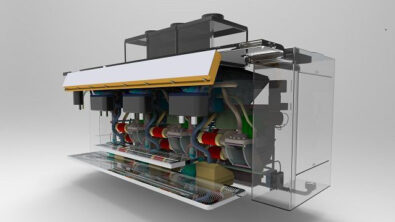Discovering digital product simulation; from imagination to creation

Empowered by social interactions, more access to information, various product choices, and imagination, consumers’ desire to purchase custom-made goods has increased in recent years. Products such as exercise equipment designed to adapt to a person’s health and athletic ability, sneakers custom-made to match the colors of a favorite sports team, or a specially formulated shampoo created to fit an individual’s pH balance and hair type are some examples of consumers’ demand for personalized goods and services.
Consumers want to have access to bespoke products that fit their needs.
Of course, customization of products is certainly not a new concept and has been around for generations. However, mass production arose when consumers started demanding to purchase products faster and cheaper. This trend was one of the attributing factors in the decline of requests for tailored-made products. More recently, the era of digitalization and e-commerce has made bespoke goods more desirable and accessible. Also, ingenuity, innovations, and additive manufacturing advancements have made customized goods more efficient to produce and affordable.

The mainstream appeal for personalized goods has consumers imagining and then dictating to manufacturers what they want when they want it and how they want products to function and look.
As individuals, we inherently want to be viewed as unique and stand out in a crowd—what better way to do that than by having the opportunity to create and purchase customize goods or services. We also enjoy the benefits of feeling connected when taking part in the creation process while tailoring a product to fit our needs or desires.
Consumer goods manufacturers also gain many advantages for developing custom-designed products. These advantages include manufacturing growth and sustainability, out-innovating competitors, staying relevant while establishing consumer loyalty.
While it is undoubtedly beneficial for consumers to have access to personalized items, manufacturers must determine what level of customization to offer and what strategies to adopt. Brands that adopt product design and simulation strategies can provide bespoke goods on a mass scale. With that capability, consumers can modify an existing product or design a product from start to finish.
Consumer goods manufacturers must find ways to pivot to keep up with the demand for customized goods.
Manufacturers need solutions to create flexible and sustainable products. Solutions that maintain their quality and compliances while lowering production costs are also crucial elements. Moreover, to stay competitive and relevant, brands must adapt product design and simulation strategies. Adopting such solutions allows manufacturers to get products to market faster.
Consumer manufacturers that invest in Smart Processes and Product Design are taking the journey from imagining to creating human-centered products that fit consumers’ needs. What can you imagine?


